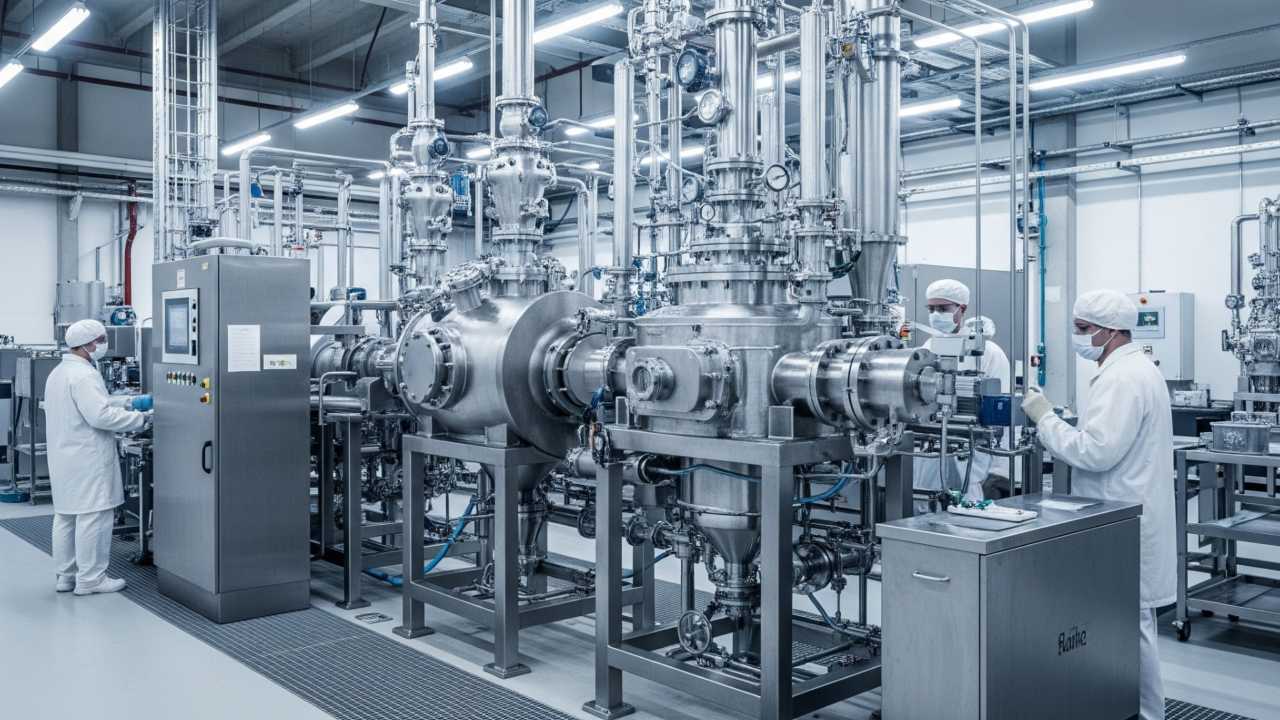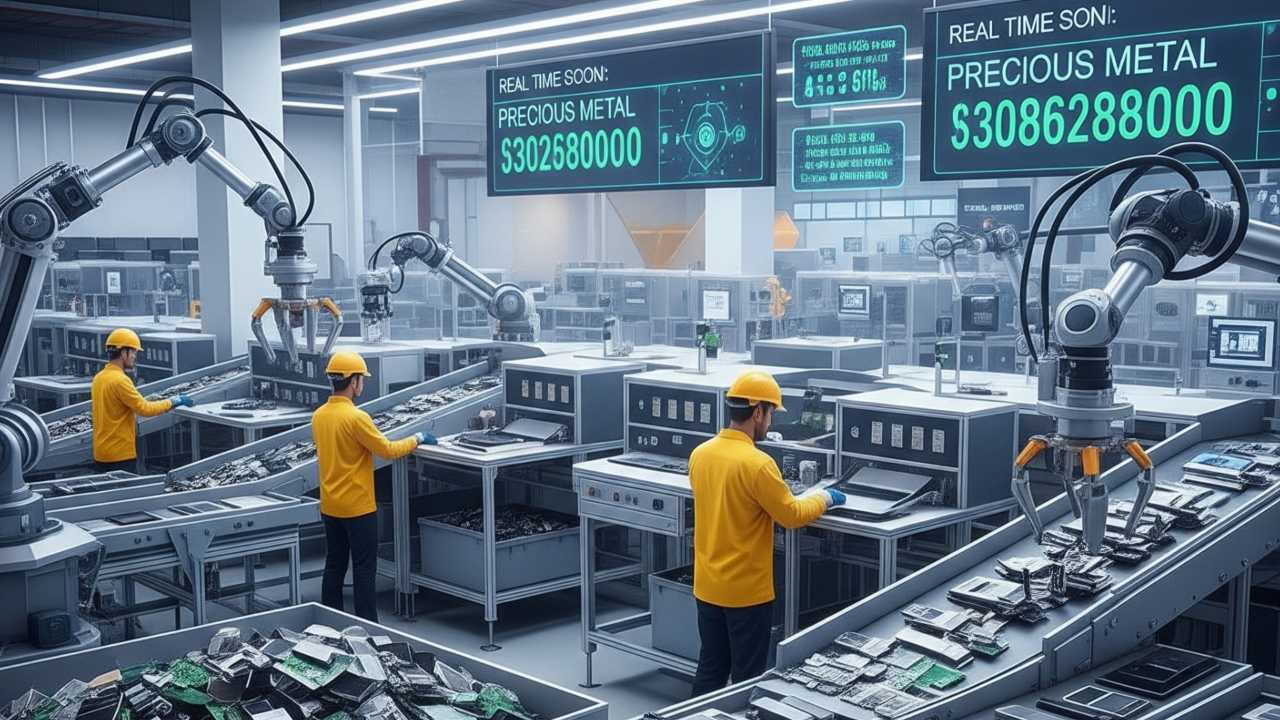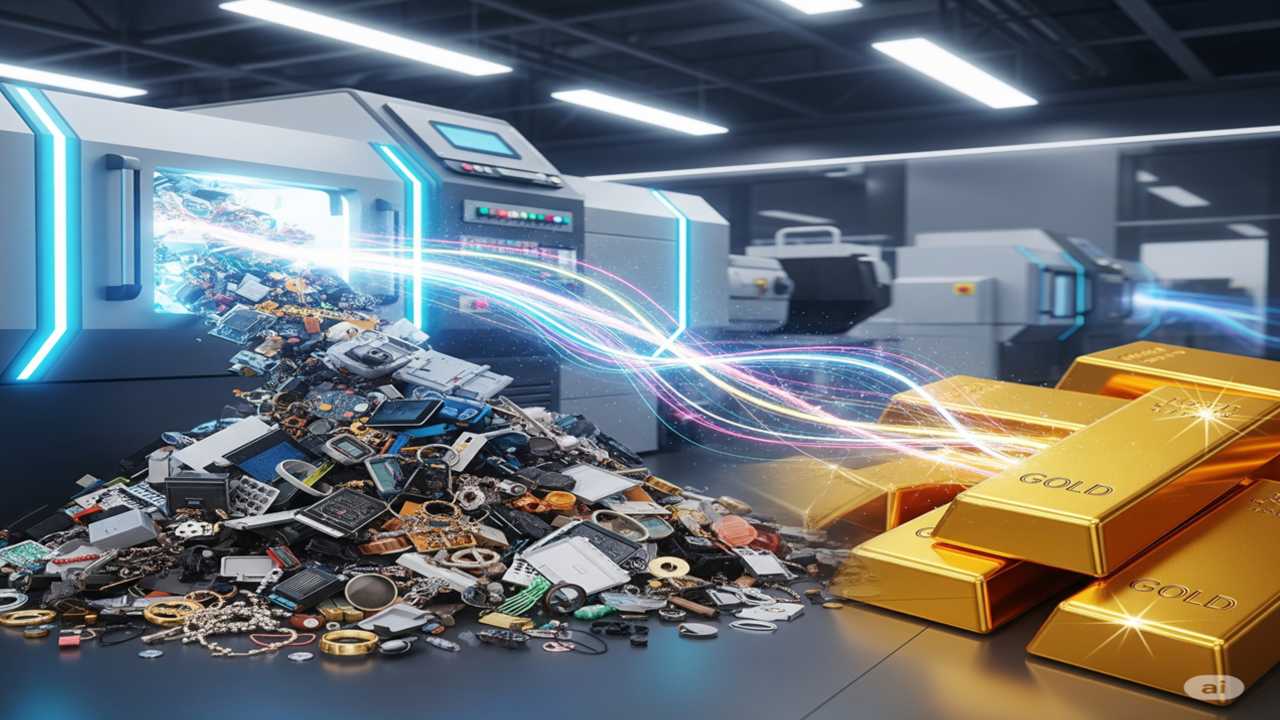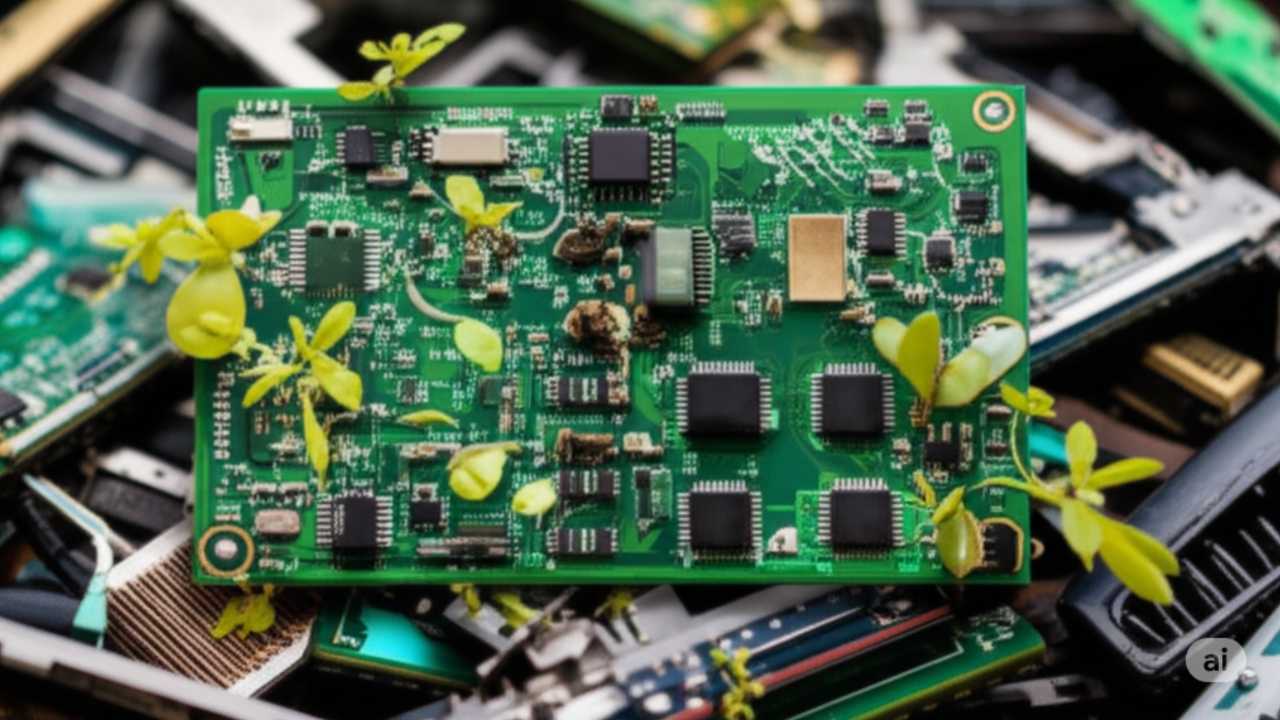From Ore to Bullion: How Our Machines Support Mining Operations
The journey from a raw, unyielding rock face to a gleaming bar of precious metal is one of the most arduous and technologically intensive endeavors known to humanity. It’s a process fraught with challenges – geological complexities, environmental considerations, safety imperatives, and the relentless pressure of economic viability.
At the heart of this intricate dance, transforming potential into tangible wealth, lies the indispensable power of machinery. From the initial blast to the final pour, our advanced equipment is the silent, tireless partner enabling mining operations to unlock the Earth’s hidden treasures, ultimately delivering “ore to bullion.
The modern mining landscape is unrecognizable from its historical counterparts. Gone are the days of picks, shovels, and brute force as the primary means of extraction. Today, mining is a high-tech industry, a symphony of engineering prowess, automation, and sophisticated data analysis. And at every stage of this complex symphony, specialized machines play a pivotal, often transformative, role.
The Overture: Exploration and Site Preparation
Before the first ounce of ore can be extracted, a meticulous and often lengthy phase of exploration and site preparation must occur. While not directly involved in ore processing, specialized machinery is crucial even here.
Geophysical Survey Equipment: Though not heavy machinery in the traditional sense, advanced drones equipped with magnetometers, ground-penetrating radar, and electromagnetic sensors provide crucial data for identifying potential ore bodies hidden deep beneath the surface. These machines help define the geological landscape, pinpointing anomalies that indicate mineral deposits, guiding subsequent drilling.
Drilling Rigs (Exploration Phase): Once potential zones are identified, specialized diamond core drills or reverse circulation (RC) rigs are deployed. These machines meticulously bore into the earth, extracting cylindrical core samples that provide invaluable insights into the depth, grade, and geological characteristics of the ore body. The precision and efficiency of these rigs are paramount in defining the scope and economic viability of a deposit.
Earthmoving Equipment (Initial Site Preparation): As a deposit transitions from exploration to development, heavy earthmoving equipment takes center stage. Bulldozers, excavators, and graders are deployed to clear vegetation, establish access roads, and prepare the footprint for processing plants, tailings storage facilities, and administrative buildings. The sheer scale of material moved in this phase demands robust, high-capacity machinery capable of operating in diverse and often challenging terrains.
The Extraction: Unearthing the Riches
This is where the true heavyweights of the mining industry come into their own. The methods of extraction – open-pit or underground – dictate the specific types of machinery employed, but the underlying principle remains the same: efficient and safe removal of ore.
Open-Pit Mining: A Grand Scale Operation
Open-pit mining, characterized by vast, terraced excavations, demands machinery of colossal proportions and immense power.
Rotary Blasthole Drills: Before any rock can be moved, it must be fragmented. Rotary blasthole drills, some of the largest land-based machines in the world, bore precise holes into the rock face. These holes are then loaded with explosives. The accuracy and penetration rates of these drills are critical for optimizing fragmentation and minimizing secondary blasting.
Hydraulic Excavators and Electric Rope Shovels: Following blasting, the fragmented ore and waste rock are loaded. Hydraulic excavators, with their immense digging forces and large buckets, are adept at selective loading and navigating complex terrain. Electric rope shovels, conversely, are the titans of high-volume loading, particularly in hard rock applications, capable of filling enormous haul trucks in just a few passes. Their reliability and low operating costs over their lifespan make them a cornerstone of large-scale open-pit operations.
Haul Trucks (Off-Highway Trucks): These gargantuan vehicles, some capable of carrying hundreds of tons of material, are the workhorses of transportation within the mine. They tirelessly shuttle ore from the pit face to primary crushers or stockpiles, and waste rock to designated disposal areas. The reliability, fuel efficiency, and advanced telemetry of these trucks are crucial for maintaining continuous production cycles and minimizing downtime. Autonomous haulage systems, a burgeoning technology, are further revolutionizing this segment, enhancing safety and operational efficiency.
Wheel Loaders: While haul trucks move the bulk, wheel loaders provide essential support. They are highly versatile, used for various tasks such as stockpiling, material handling at transfer points, cleaning up spills, and assisting with smaller-scale loading operations. Their mobility and agility make them indispensable across the mine site.
Dozers: These robust machines are used for pushing material, ripping stubborn ground, maintaining haul roads, and preparing benches for drilling and blasting. Their continuous track systems provide excellent traction and stability, making them ideal for challenging terrain and demanding tasks.
Underground Mining: Precision in Constrained Spaces
Underground mining presents a different set of challenges and, consequently, requires a different suite of specialized machinery, often smaller and more maneuverable but no less powerful.
Jumbo Drills (Drill Rigs): These multi-boom drills are at the forefront of underground development and production. They rapidly bore holes for blasting in tunnels and stopes. Modern jumbos often feature automated drilling cycles, laser guidance, and advanced collision avoidance systems, significantly enhancing safety and productivity.
Load-Haul-Dump (LHD) Machines: LHDs are the quintessential underground workhorses. These highly versatile machines are designed to scoop up blasted ore, transport it over short to medium distances, and dump it into underground crushers or ore passes, or directly into underground haul trucks. Their articulated steering and compact design allow them to operate efficiently in confined spaces.
Underground Haul Trucks: Similar to their open-pit counterparts but scaled for subterranean environments, underground haul trucks transport ore from loading points to surface processing facilities or internal crushing stations. These trucks are often equipped with advanced ventilation and exhaust filtration systems to manage emissions in enclosed spaces.
Raise Borers: These specialized drills create vertical or inclined shafts (raises) between different levels of an underground mine. They are crucial for ventilation, ore passes, and access ways, providing efficient vertical connectivity within the mine.
Continuous Miners: In certain soft rock applications, particularly coal mining, continuous miners can directly cut and load material without the need for blasting. These machines are highly productive, significantly reducing the mining cycle time.
Roof Bolters: Safety is paramount in underground mining, and roof bolters are critical for ground support. These machines install steel bolts into the mine roof and walls, preventing rock falls and ensuring the stability of underground excavations.
The Processing: Transforming Ore into Concentrate
Once extracted, the raw ore is far from ready for market. It must undergo a series of complex physical and chemical processes to separate the valuable minerals from the waste rock (gangue). This is where an entirely different class of machinery comes into play, supporting the beneficiation plant.
Primary, Secondary, and Tertiary Crushers: The first step in processing is size reduction. Jaw crushers, gyratory crushers, and cone crushers systematically break down the large ore chunks into progressively smaller fragments. The efficiency and throughput of these machines directly impact the capacity of the entire processing plant.
Grinding Mills (Ball Mills, SAG Mills): After crushing, the ore particles are still too large for efficient mineral separation. Grinding mills, such as SAG (Semi-Autogenous Grinding) mills and ball mills, rotate enormous drums filled with grinding media (steel balls or the ore itself). This process reduces the ore to a fine powder, liberating the valuable minerals from the gangue. These mills consume significant power and are critical to achieving the optimal particle size for subsequent separation processes.
Screens and Classifiers: Throughout the crushing and grinding circuits, screens and classifiers (hydrocyclones) are used to separate particles by size. This ensures that only material of the correct size proceeds to the next stage, optimizing the efficiency of downstream processes and preventing over-grinding.
Flotation Cells: For many base and precious metals (e.g., copper, gold, silver), froth flotation is a cornerstone of separation. In large flotation cells, finely ground ore slurry is mixed with chemical reagents and air bubbles. The valuable mineral particles selectively attach to the air bubbles and float to the surface as a froth, while the waste material sinks. The design and aeration efficiency of these cells are vital for maximizing mineral recovery.
Thickeners and Filters: After flotation, the mineral concentrate is still in a slurry form. Thickeners allow the solid particles to settle, dewatering the concentrate. Subsequently, various types of filters (e.g., vacuum filters, pressure filters, disc filters) remove further moisture, preparing the concentrate for smelting or further refining. Efficient dewatering reduces transportation costs and energy consumption in subsequent thermal processes.
Conveyor Systems: The entire processing plant is interconnected by an extensive network of conveyor belts. These machines tirelessly transport ore and concentrate between different processing stages, ensuring a continuous flow of material and minimizing manual handling. The reliability and capacity of conveyor systems are fundamental to plant uptime and throughput.
Pumps: Slurry pumps, water pumps, and chemical pumps are ubiquitous throughout the processing plant. They are responsible for moving vast quantities of liquids and slurries between various tanks, cells, and circuits, maintaining the necessary flow rates and pressures for efficient operation.
The Refinement: From Concentrate to Bullion
The concentrate produced at the mine site is typically not pure metal. It still contains impurities and needs further processing to produce high-purity bullion. This final stage usually takes place at specialized refineries, often located off-site, but relies on sophisticated machinery for high-temperature and electrochemical processes.
Furnaces (Smelting Operations): For many metals, smelting is the next step. Large industrial furnaces (e.g., reverberatory furnaces, electric arc furnaces, flash smelters) use intense heat to melt the concentrate, separating the metal from remaining impurities through various chemical reactions. The precise temperature control and material handling within these furnaces are critical.
Anode Casting Machines: In electrolytic refining processes (common for copper, gold, and silver), the smelted metal is cast into anodes. These specialized casting machines ensure uniform anode size and quality, which is crucial for efficient electrolysis.
Electrolytic Cells: These large vats contain an electrolyte solution and the metal anodes. Through the application of an electric current, pure metal is deposited onto cathodes, while impurities remain in the solution or form sludge. The design of these cells, the power rectifiers, and the material handling systems for anodes and cathodes are paramount for high-purity metal production.
Induction Furnaces (for bullion casting): Once refined, the pure metal is melted in induction furnaces and then poured into molds to create bullion bars or ingots. These furnaces offer precise temperature control and minimize contamination, ensuring the final product meets stringent quality standards.
Beyond the Production Line: Supporting Machinery
The core production machinery is supported by a vast array of other equipment that ensures the safety, efficiency, and environmental compliance of the entire operation.
Maintenance and Workshop Equipment: From large cranes for engine removal to welding machines, lathes, and diagnostic tools, the workshop is the nerve center for keeping all the heavy machinery operational. Preventive maintenance and rapid repairs are critical to minimizing costly downtime.
Water Management Systems: Pumps, pipelines, and filtration systems are vital for managing water resources, including dewatering mines, supplying process water, and treating tailings water to meet environmental regulations.
Dust Suppression Systems: In dry mining environments, dust generation is a significant concern. Water trucks, spray systems, and industrial vacuum cleaners are deployed to suppress dust, protecting worker health and minimizing environmental impact.
Ventilation Systems (Underground): Large fans and ducting systems are essential in underground mines to provide fresh air, remove harmful gases, and regulate temperature, ensuring a safe working environment.
Safety and Emergency Response Vehicles: Ambulances, fire trucks, and specialized rescue vehicles are on standby, equipped to respond to any incident, highlighting the industry’s commitment to safety.
Laboratory Equipment: From X-ray fluorescence (XRF) analyzers to atomic absorption spectrometers, laboratory equipment provides continuous analysis of ore, concentrate, and tailings, ensuring process optimization and quality control at every stage.
The Future: Automation, AI, and Sustainability
The mining industry is not static. It is constantly evolving, driven by the need for greater efficiency, improved safety, and reduced environmental footprint. Our machinery is at the forefront of this evolution:
Automation and Autonomous Systems: Self-driving haul trucks, remote-controlled LHDs, and automated drill rigs are becoming increasingly common, improving safety by removing personnel from hazardous environments and increasing productivity through optimized routes and continuous operation.
Electrification: The shift towards electric-powered mining equipment, particularly in underground mines, is gaining momentum. This reduces greenhouse gas emissions, improves air quality in confined spaces, and lowers operating costs in the long run.
Data Analytics and AI: Sensors embedded in machinery collect vast amounts of data on performance, wear, and operational parameters. AI-powered analytics are used for predictive maintenance, optimizing production schedules, and identifying inefficiencies, leading to smarter, more proactive mining operations.
Sustainable Mining Solutions: Our machines are being designed with sustainability in mind, incorporating features for reduced fuel consumption, lower emissions, and advanced waste management technologies. This includes innovations in water recycling, tailings management, and energy recovery.
Final Thoughts
The transformation “from ore to bullion” is a testament to human ingenuity, determination, and technological advancement. At every critical juncture of this complex journey, from the initial exploratory drill hole to the final cast bar, our sophisticated machinery stands as an indispensable partner. These powerful, intelligent, and increasingly autonomous machines are not merely tools; they are the backbone of modern mining, enabling the efficient, safe, and environmentally responsible extraction and processing of the vital resources that underpin global industries and modern life.
As the demands on the mining sector continue to grow, the innovation and capabilities of our machines will remain at the forefront, shaping the future of resource extraction for generations to come.








